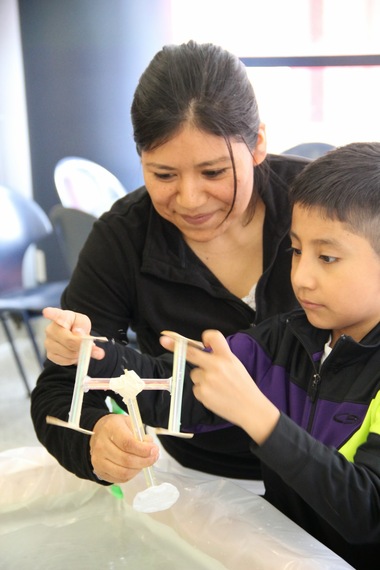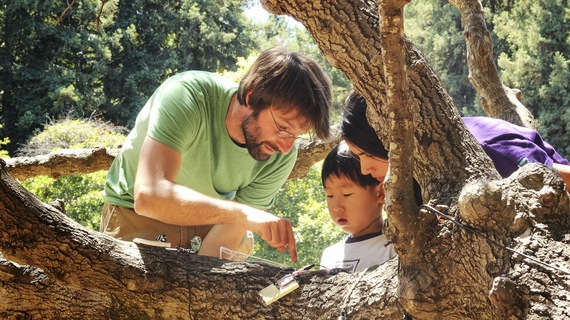I run a nonprofit and routinely work on big projects with a large team that span many months. In addition I also write NSF grants that typically take 200-300 hours to write. I love what I do, but it is hard.
I also have two little girls and am forced to stop working after the nanny leaves at 6:00p.m. every day and on the weekends. One weekend I was particularly frustrated and dejected because my proposal wasn't going how I wanted it to go and writing was particularly tough. I was also tired, after having worked many nights.
I decided to make something very simple with my girls -- cut a little animal (a cheetah) out of cloth and sew it onto a quilt that we have been slowly adding to, over two years. It was a very simple, little project.
We did it and I felt such a delicious sense of peace and contentment. I had created something that hadn't existed before. I felt as if a block had been rolled away and that I could go back to my proposal with the knowledge that I could do it.
My nonprofit helps engineers and scientists communicate what they do to children through open-ended design challenges. Over the past seven years we have trained more than 1400 engineers and scientists to develop and teach design challenges to more than 21,000 children.
A major and unforeseen benefit of this model has been the sense of satisfaction that the engineers and scientists get when they design the curriculum. The curriculum development process gives them an opportunity to tinker and design a challenge that addresses a few constraints:
* CHALLENGE - Does the design provide a clear, interesting, juicy, exciting solution to the challenge?
* EXPLAIN - Does the challenge allow students to understand the concept?
* VARIATIONS - Is there more than one way to build the challenge, or with different materials?
* TESTABLE - Is the result of the test sensory? E.g: a model that flies, or a speaker that emits a sound.
* INFORMATIVE - Does the challenge relate to the engineer's personal work or the work of others?
* The challenge should use a standard set of low cost materials, e.g: rubber bands, straws, popsicle sticks, it should take a third grader 50 min to complete with the support of an adult and it should be age-blind, i.e. different ages can address the challenge with their own versions.
A good design challenge would be to build a creature that can run over water. This would illustrated the physics concepts of surface area, torque and stability.
Coming up with a challenge that meets all these constraints is not easy, but the timescale of all iterations is small. And this is the biggest difference from professional science and engineering projects. In our programs, it is possible to go from ideation to final success in a few days or even a week -- compared to year-long, product cycles in complex engineering and research projects.
The feeling of success and of creating something that didn't exist before is very satisfying and calming. And this spills over into the professional project.
Over the past few years, I have formed the following hypothesis regarding creativity:
* that special chemicals are released in our brains when we create something
* these special chemicals are agnostic to the size or seriousness of the project we are working on (so they are released even when playing with legos)
* there is a critical threshold of these special chemicals that is needed to be creative in the first place.
My advice to myself (and our engineers and scientists) is to go out and tinker with children. It is good for our creativity, innovation and well-being.



